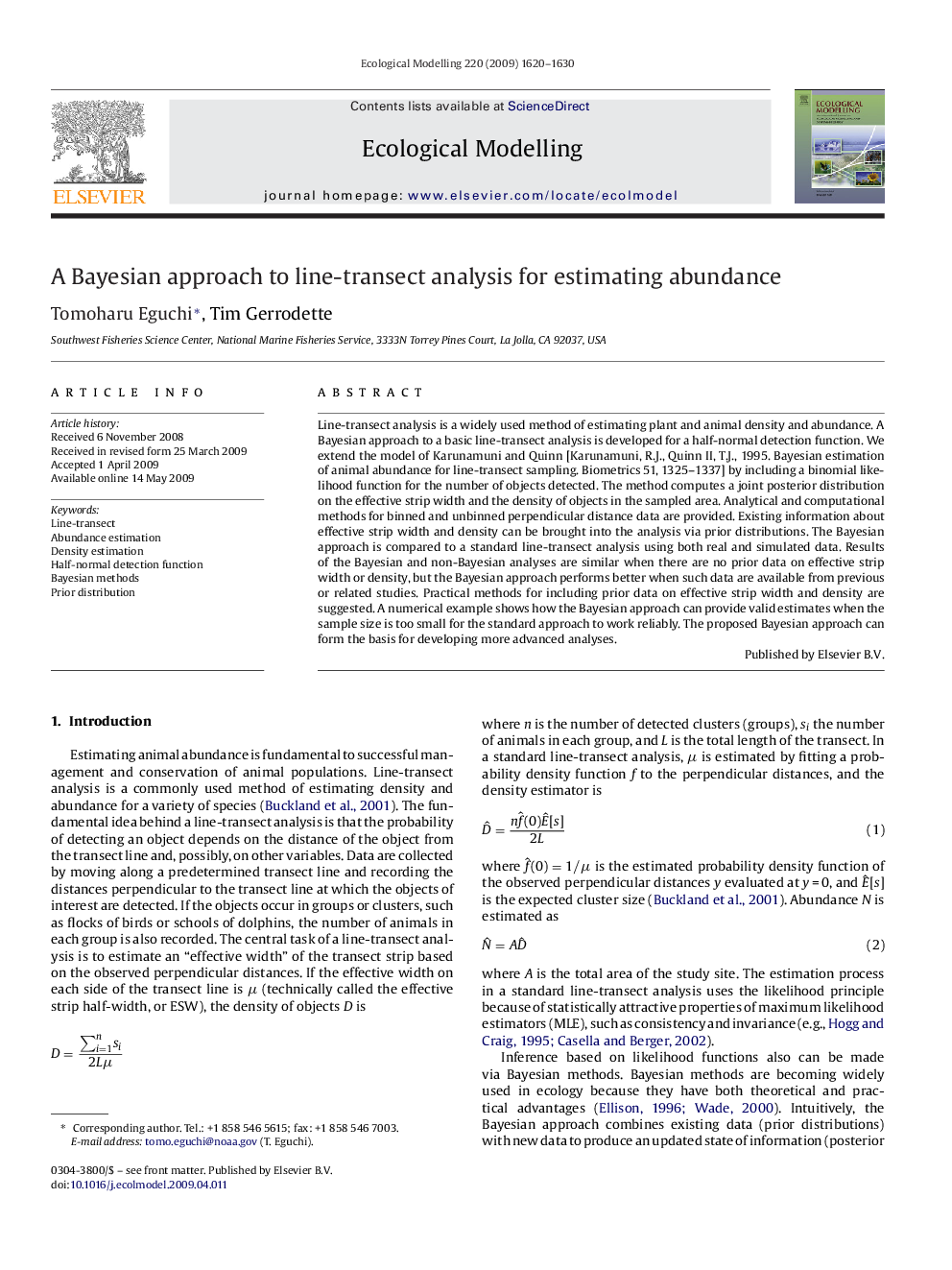| Article ID | Journal | Published Year | Pages | File Type |
|---|---|---|---|---|
| 4377741 | Ecological Modelling | 2009 | 11 Pages |
Line-transect analysis is a widely used method of estimating plant and animal density and abundance. A Bayesian approach to a basic line-transect analysis is developed for a half-normal detection function. We extend the model of Karunamuni and Quinn [Karunamuni, R.J., Quinn II, T.J., 1995. Bayesian estimation of animal abundance for line-transect sampling. Biometrics 51, 1325–1337] by including a binomial likelihood function for the number of objects detected. The method computes a joint posterior distribution on the effective strip width and the density of objects in the sampled area. Analytical and computational methods for binned and unbinned perpendicular distance data are provided. Existing information about effective strip width and density can be brought into the analysis via prior distributions. The Bayesian approach is compared to a standard line-transect analysis using both real and simulated data. Results of the Bayesian and non-Bayesian analyses are similar when there are no prior data on effective strip width or density, but the Bayesian approach performs better when such data are available from previous or related studies. Practical methods for including prior data on effective strip width and density are suggested. A numerical example shows how the Bayesian approach can provide valid estimates when the sample size is too small for the standard approach to work reliably. The proposed Bayesian approach can form the basis for developing more advanced analyses.
